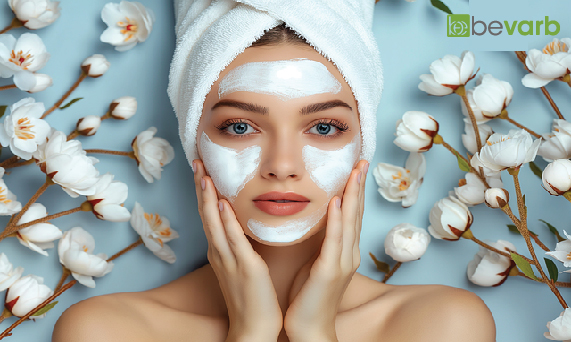Now Reading: How To Build A Skincare Routine For Every Skin Type
-
01
How To Build A Skincare Routine For Every Skin Type
How To Build A Skincare Routine For Every Skin Type

When it comes to skincare, there is no one-size-fits-all routine. The key to maintaining healthy, radiant skin lies in identifying your skin type and customizing your skincare steps accordingly. Whether your skin is normal, dry, oily, combination, or sensitive, the right skincare routine can do wonders.
In this post, we’ll dive deep into the ideal skincare routine for every skin type, exploring the importance of each step from cleansing to moisturizing and how each step contributes to a balanced complexion. By understanding your skin type and how to best care for it, you can create a glowing, healthy, and confident look every day.
How many Skin Types?
Before diving into a tailored routine, it’s crucial to understand your skin type. Here’s a quick rundown of the five main skin types:
- Normal Skin: Balanced and neither too dry nor too oily. It’s typically smooth with small pores, even tone, and no significant concerns like redness or breakouts.
- Dry Skin: Lacks moisture, which can lead to rough texture, flakiness, and a feeling of tightness. It may appear dull or lack radiance.
- Oily Skin: Characterized by an overproduction of sebum (skin oil), which can lead to shiny skin, clogged pores, and acne breakouts.
- Combination Skin: A mix of oily and dry areas. Typically, the T-zone (forehead, nose, chin) is oily, while the cheeks are dry or normal.
- Sensitive Skin: Easily irritated, red, or inflamed. It reacts to certain ingredients, weather conditions, or external factors.
Once you’ve identified your skin type, it’s time to establish the perfect skincare routine tailored to your needs.
Essential Skincare Steps for All Skin Types
- Cleanse: The First Step to Fresh Skin
The foundation of any skincare routine starts with cleansing. Regardless of your skin type, cleansing helps remove dirt, sweat, makeup, and environmental pollutants, ensuring your skin is clean and ready to absorb the benefits of subsequent products.
- For Normal Skin: Use a gentle, non-stripping cleanser to maintain balance without removing natural oils. Look for a mild, hydrating formula.
- For Dry Skin: Opt for a creamy or oil-based cleanser that replenishes moisture. Avoid harsh, foaming cleansers that can strip the skin of its natural oils.
- For Oily Skin: Go for a foaming or gel-based cleanser that effectively removes excess oil while preventing clogged pores and breakouts.
- For Combination Skin: Choose a gentle, balancing cleanser that can work for both the oily T-zone and drier cheek areas.
- For Sensitive Skin: Stick to fragrance-free, hypoallergenic cleansers that soothe irritation without causing redness or discomfort.
- Tone: Refresh and Balance
Toning helps to balance your skin’s pH levels, remove any leftover impurities, and prep your skin for the next steps. Toners also help refine pores and add an extra layer of hydration.
- For Normal Skin: A hydrating toner with ingredients like aloe vera or chamomile will maintain skin’s natural balance.
- For Dry Skin: Look for a moisturizing toner that contains hydrating agents like glycerin or hyaluronic acid to prevent dehydration.
- For Oily Skin: Opt for an astringent toner that helps control oil production. Look for formulas with salicylic acid or witch hazel to tighten pores.
- For Combination Skin: A gentle, alcohol-free toner that balances moisture and oil production is ideal.
- For Sensitive Skin: Choose a soothing, alcohol-free toner with calming ingredients like rose water or calendula to reduce irritation.
- Exfoliate: Renew Your Skin
Exfoliation is a key step in any routine as it removes dead skin cells, unclogs pores, and promotes cell turnover. However, the frequency and type of exfoliant you use should depend on your skin type.
- For Normal Skin: Exfoliate 1-2 times a week with a gentle scrub or chemical exfoliant containing AHAs (alpha hydroxy acids) like glycolic acid.
- For Dry Skin: Exfoliate once a week with a mild exfoliant. Look for products with mild lactic acid or fruit enzymes for a gentle exfoliation.
- For Oily Skin: Use a stronger exfoliant with salicylic acid 2-3 times a week to target deep pores and manage oil production.
- For Combination Skin: Focus on exfoliating the oily areas (T-zone) while being more gentle on the drier sections. A gentle scrub with a mix of AHAs and BHAs works well.
- For Sensitive Skin: Choose a very mild exfoliant, such as a product with enzymes or a gentle scrub, and limit exfoliation to once a week.
- Mask: Indulge Your Skin
Face masks are a great way to give your skin an extra boost of nourishment. The right mask can address specific concerns like hydration, acne, or brightening.
- For Normal Skin: A hydrating or nourishing mask will complement your skin’s natural balance.
- For Dry Skin: Opt for intensely hydrating masks containing ingredients like honey, avocado, or hyaluronic acid to restore moisture.
- For Oily Skin: Choose a clay mask to detoxify and absorb excess oils, or one with activated charcoal for deep pore cleansing.
- For Combination Skin: Multi-masking is an option here. Apply a hydrating mask to the dry areas and a clay mask to the oily areas.
- For Sensitive Skin: Look for a calming, soothing mask made with ingredients like oatmeal, aloe vera, or chamomile that won’t irritate the skin.
- Treat: Target Specific Skin Concerns
Treatment products, such as serums and spot treatments, help to target specific skin concerns like acne, pigmentation, or fine lines. Choose a treatment based on what you want to address.
- For Normal Skin: A light serum with antioxidants, like Vitamin C, can help protect against environmental damage and promote radiance.
- For Dry Skin: A nourishing serum with hyaluronic acid or peptides can help restore moisture and improve skin texture.
- For Oily Skin: A serum with niacinamide or salicylic acid can help regulate oil and reduce breakouts.
- For Combination Skin: A lightweight serum with ingredients like hyaluronic acid or Vitamin C can address hydration without feeling greasy.
- For Sensitive Skin: Go for a calming treatment serum that contains soothing ingredients like calendula or chamomile.
- Moisturize: Lock in Hydration
Moisturizing is crucial for all skin types. Even oily skin needs moisture, as dehydration can lead to increased oil production.
- For Normal Skin: A lightweight moisturizer that hydrates without being too heavy is ideal.
- For Dry Skin: Use a thicker, richer moisturizer that contains ingredients like shea butter, ceramides, or oils to lock in moisture and prevent water loss.
- For Oily Skin: Choose an oil-free, gel-based moisturizer that hydrates without clogging pores or feeling greasy.
- For Combination Skin: Use a balancing moisturizer with a lighter texture for the T-zone and a richer cream for the dry areas.
- For Sensitive Skin: A fragrance-free, hypoallergenic moisturizer with calming ingredients like aloe vera or ceramides will provide comfort without irritation.
- Eye Care: Target the Delicate Area
The skin around your eyes is thinner and more delicate than the rest of your face, so it needs special attention. Using an eye cream can help address puffiness, dark circles, and fine lines.
- For Normal Skin: A lightweight eye cream with a combination of antioxidants and peptides will keep the skin smooth and firm.
- For Dry Skin: Opt for a richer eye cream with hydrating ingredients like hyaluronic acid and nourishing oils to prevent dryness and irritation.
- For Oily Skin: A lightweight, non-greasy eye gel will help target puffiness without weighing down the skin.
- For Combination Skin: Choose a balanced, hydrating eye cream that works across both dry and oily zones.
- For Sensitive Skin: Stick to a fragrance-free, gentle formula that won’t cause irritation or redness.
- Protect: Never Skip SPF
SPF is a non-negotiable step in your skincare routine. Protecting your skin from harmful UV rays is crucial to prevent premature aging, pigmentation, and skin cancer.
- For All Skin Types: Use a broad-spectrum SPF 30 or higher, applied every morning, even on cloudy days. For dry skin, opt for a hydrating sunscreen, while oily skin may benefit from oil-free formulas.
- Body Care: Complete Your Skincare Routine
While we often focus on our faces, body care is just as important. Apply a nourishing body lotion or cream to keep your skin soft, smooth, and hydrated. Dry skin may benefit from thicker creams, while oily skin may do better with a lightweight lotion.
A tailored skincare routine is essential for every skin type. By choosing the right products and following the correct steps, you can address your skin’s unique needs and maintain a glowing, healthy complexion. Remember, skincare isn’t a one-time deal it’s about consistency, patience, and understanding what works for your skin. Embrace your skin type, follow these steps, and you’ll be well on your way to healthy, glowing skin that radiates confidence.






















